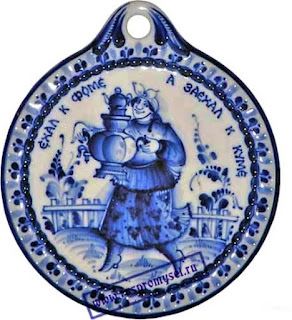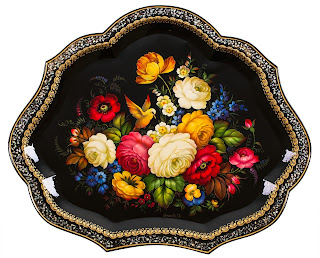Персональный сайт Ворониной Марины Владимировны, преподавателя английского языка ГБПОУ НО "КБЛК"
Поиск по этому блогу
15 декабря 2022 г.
Практика создания тестов в СДО Moodle
6 ноября 2022 г.
КУЛЬТУРНЫЙ МАРАФОН 2022
12 сентября 2022 г.
Attractions and entertainment in the Nizhny Novgorod Region
5 сентября 2022 г.
Attractions and entertainment in the Nizhny Novgorod Region

1 сентября 2022 г.
10 июня 2022 г.
31 мая 2022 г.
19 мая 2022 г.
17 мая 2022 г.
6 мая 2022 г.
4 мая 2022 г.
Russian folk craft
Dymkovo Toys
Colourful Dymkovo figurines, whistles among them, represent the most famous and one of the oldest clay handicrafts of Russia.
The brand name of these peculiar toys comes from the Dymkovo Settlement, today a district of the city of Vyatka (Kirov). It appeared out of love for the pottering tradition in Vyatka lands in antiquity. According to many researchers, the development of the Dymkovo clay toy was related to the ritual spring holiday of Svistoplyaska (i.e. whistle-dance) celebrating the Sun. To take part in the festivity, one needed a clay whistle to make sounds with and a painted clay ball to throw to each other.
The whistles were made in shape of various totem animals, such as the bear, the goat, the sheep, the deer, but as a matter of fact were quite simple, their function being magic rather than decorative. In spite of the ritual meaning of the clay whistles, one can notice certain irony, with which masters designed them. Thus, a whistle bear could be playing some music instrument, and a goat could be wearing funny trousers. Such clay whistles were made exclusively by women and girls preparing for the holiday in advance.
In the 19th century the holiday turned into a boisterous fair, necessarily with whistling. The magic meaning of the festivity was lost. The whistles remained and acquired more fanciful decorative features. Whereas formerly animals had been the main subject, the 19th century saw the appearance of toys that depicted dressed-up women holding babies, or baskets with pies, or bucket yokes, sitting on benches or in boats. Later Dymkovo toy masters turned to town plots, with stylish ladies, townsfolk, officers, tradeswomen and skomorokhi (wandering minstrel-cum-clowns).
Whatever a Dymkovo toy depicts, it is always distinctive due to its unparallel ornate colouring. The dark and light blue, green, yellow, orange and raspberry colours look very cheerful on the white background. There might be up to ten colours together. The ornament is always rather simple, with checks, stripes, circles, dots, diamonds, and zigzags in various combinations. These simple geometrical patterns, however, bear certain information. Thus, for instance, a wavy blue line stands for water, crossed stripes denote a curb, and a circle with a star in the middle symbolizes the Sun or other celestial bodies.
The method of producing the Dymkovo toys seems also quite simple: a toy is hand molded of the local red clay mixed with river sand. The whistles are pierced with a special stick. The figurine is made by parts. Separate parts are fastened together with liquid clay, the joints smoothed away with a wet cloth. The toy is dried and baked, and then whitewashed with chalk diluted in milk. Afterwards it is painted.
Every Dymkovo toy is handmade and unique, existing as the only copy. Every master brings in her own manner and colouring. The Dymkovo toy handicraft still has no serial production, which makes it different from other folk arts and crafts.
Presently Russian culture experiences tendencies similar to those in the West, with ethnic motifs becoming an integral part of creativity among sculptors, artists, designers and fashion-designers. There is a hope that the Dymkovo toy will not be forgotten, but, on the contrary, will be developed, reconsidered and interpreted on a new level. Rooted in ancient pagan outlook, it can serve as an inexhaustible source of inspiration for a creative person.
Today anyone, a kid or a grown-up, can try and make a Dymkovo toy. The main things you need are clay and fancy. Otherwise, a bright whistle brought from Russia might become a stunning souvenir and present.
27 апреля 2022 г.
11 апреля 2022 г.
Russian folk craft
6 апреля 2022 г.
Russian folk craft





28 марта 2022 г.
Russian folk craft
Gzhel is a national Russian folk craft consisting of blue and white painting on ceramics. The region with the same name, which includes 27 villages and which is one of the Russian centers for the production of ceramics, is located 60 km from Moscow.
Gzhel has long been famous for its high-quality clay deposits. The first mention of Gzhel goes back to the 14th century.
An interesting fact about this area is that there has never been serfdom there. Gzhel belonged to the imperial court, and the craft was the main occupation of the local population. This made it possible to concentrate all forces on honing the skills and improving production technologies.
By 1812 there were 25 factories producing ceramic dishes in Gzhel. In addition to dishes, they used to make toys in the form of birds and animals, as well as decorative statues based on motives from Russian life. Shiny white figures were painted with lilac, yellow, blue and brown colors in a peculiar folk style. Flowers, leaves, herbs served as motives for the decorations.
The flourishing of the Gzhel art industry came in the second half of the 18th and the first half of the 19th centuries. At the beginning of the 19th century, porcelain started being produced there. At first, painting on porcelain was colored, but in the middle of the 19th century the fashion for blue and white Dutch tiles and Chinese porcelain came to Russia. Russian craftsmen adopted the trend and very soon blue patterns on a snowy background became a hallmark of Gzhel painting.
The industrial revolution with its transition from manual labor to machine industry caused a general economic upturn in the second half of the 19th century, but at the same time virtually destroyed the Gzhel national art craft with its hand-made molding and painting. Enterprises massively switched to the production of technical porcelain for the pharmaceutical and electrical industries. Many secrets and subtleties of the artistic craft were sadly forgotten and lost.
Then there were three wars of the first half of the twentieth century with their devastation, lack of fuel and raw materials. All this, as it seemed, finally buried the artistic traditions of the Gzhel craft. But fortunately, Gzhel was reborn in the middle of the twentieth century.
The blue-and-white painting successfully fit into the cultural code of the Russian mentality – a combination of blue sky, white churches and golden domes. But the main style-forming element is a “smear with shadows” that creates a multitude of subtle gradations of blue.
Nowadays, artists and masters of the Gzhel Association are the true bearers of the Gzhel traditions. Many of them are representatives of the Gzhel dynasties. They secured and, at the same time, brought a lot of new in the artistic image of the craft. Today, their products are classics and samples of real craftsmanship.
7 марта 2022 г.
Russian folk craft
Zhostovo Painting
2 марта 2022 г.
Международная дистанционная олимпиада Зима 2022
Вот и завершилась очередная олимпиада. Наши результаты (общее количество участников - 164.413):
Панов Степан (11-ЛЛХ) - 13 место
Пузырёв Даниил (11-ЛЛХ) - 13 место
Ветеркова Юлия (12-ГД) - 13 место
Мишулин Артемий (13-ТОР) - 21 место
Молодцы ребята! Так держать!!!
7 февраля 2022 г.
Russian folk craft
Palekh
The Palekh
miniature is a folk art that developed in the village of Palekh in the Ivanovo
Region. The style of painting springs from the traditions of the ancient Suzdal
and Moscow schools of icon painting (15th to 16th centuries). Beginning in the
1920s, Palekh artists began decorating boxes, brooches, powder cases,
spectacles cases, and ashtrays. The motifs for these miniatures were typically
taken from everyday life, classic works of literature, fairy tales, folk poems,
and songs. The works even won prizes at the World Expo in Paris in 1923.
10 января 2022 г.
Russian folk craft
Gorodets painting
Gorodets painting sprang from carved Gorodets distaffs that were manufactured in villages nearby Gorodets town in the Nizhni Novgorod Region. Initially Gorodets craftsmen used the incrustation technique to ornament the distaffs. The mid 19th century saw the transition from incrustation to painting of Distaff. Gorodets artists traditionally paint genre scenes (merrymaking, tea drinking, the famous Gorodets horse with a horseman, and folk festivities), decorative images of birds and animals (roosters, horses, lions, leopards, etc.) and flower patterns. Nowadays Gorodets craftsmen use similar imagery and motifs in their works. These are decorative panels, caskets, boxes, various sets of kitchen stuff, such as hardboards, bread bins, saltcellars, etc., as well as children furniture and toys, including the most popular painted rocking horse. The factory 'Gorodets Painting' existing from 1965 has got an experimental laboratory, where new genre compositions are devised. Along with preserving the artistic tradition and stylistic, dating to the 19th century, modern Gorodets painting keeps developing.











.jpg)
.jpg)
































